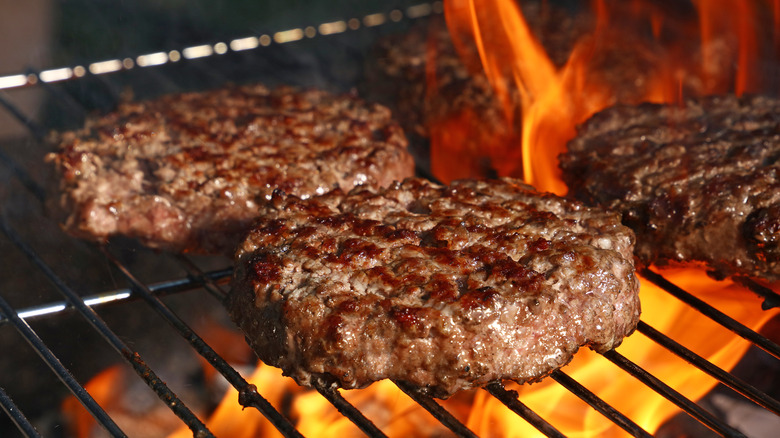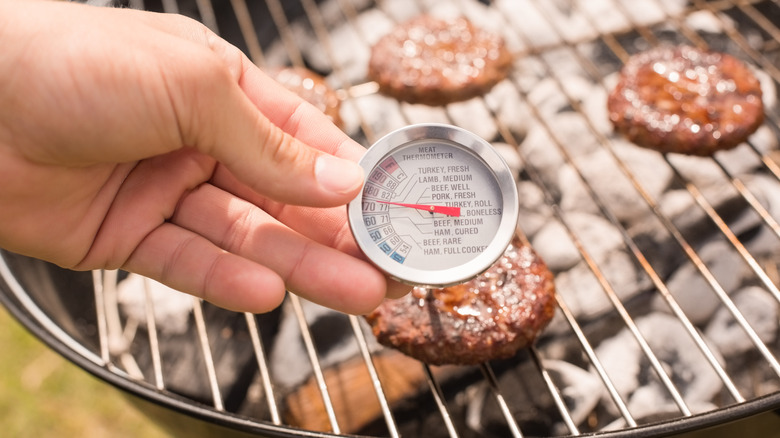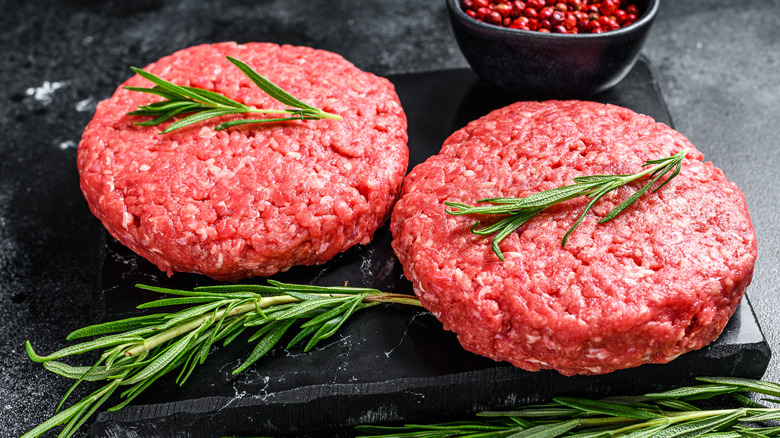What Is The 5-6-7 Rule For Burgers?
Cooking hamburgers to juicy, medium-rare perfection is a delicious yet tricky task. Backyard barbecuers have long struggled with getting that timing just right — it's tricky to know how long to leave the patties on the flame without having to cut into a burger to check, and it's easy to leave it on too long accidentally.
There are plenty of ways to tell whether a burger is done without cutting into it, from feeling it with your finger to pricking it with a knife or skewer and seeing if the juice runs clear. But there's a simple guide that doesn't require manhandling your patties at all: The 5-6-7 method. The numbers refer to minutes on the grill; if your patties are all the same standard size, ½ inch in the center, and ¾ inch on the sides, you can measure your grill time and get a perfect patty every time. For medium-rare patties, cook for 5 minutes on each side; for medium, 6 on each side; and for medium-well, 7 on each side. It's as simple as that.
Use a thermometer to double-check
While the 5-6-7 method can indeed help you accurately pinpoint a good ballpark of how long to cook your patties for, the best way to ensure a burger is cooked to your preferred doneness is to check it with a thermometer. Plenty of variables, like patty size and grill temperature, can affect the speed at which meat cooks, so double-checking with a reliable meat thermometer is ideal. A medium-rare burger will be about 130-135 degrees Fahrenheit at its center; medium is 140-145 degrees F, and medium-well is 150-155 degrees F.
We recommend using a meat thermometer for all your burger grilling endeavors, as this is truly the absolute best way to cook meat with confidence and to avoid over or under-cooking. Like the 5-6-7 method, it also reduces the need for cutting into the meat to check doneness, which can cause moisture and flavor loss.
Tricks for a better burger
Making a perfect burger on the grill doesn't just come down to proper cooking time, though that does help. If you want a better backyard burger that's packed with flavor, start with cold beef; this allows the burger to cook a little longer on the outside, causing a nice, flavorful crust to form. The exterior can cook a little longer while the interior comes up to temp, imparting flavor from the heat and smoke all the while.
This may seem like a no-brainer but season the patties thoroughly before cooking. Get a light but even layer of salt over everything — even the outside rim of the patty. Also, wait until the patty is formed to season; if you add salt to the ground meat before shaping it, it'll come out with a slightly different texture due to the salt breaking down the proteins.
Finally, try adding a little butter. A touch of grated butter in the mix with your burger meat keeps things moist, adds a little extra fat, and imparts a richness that'll have your burgers tasting far more gourmet.


